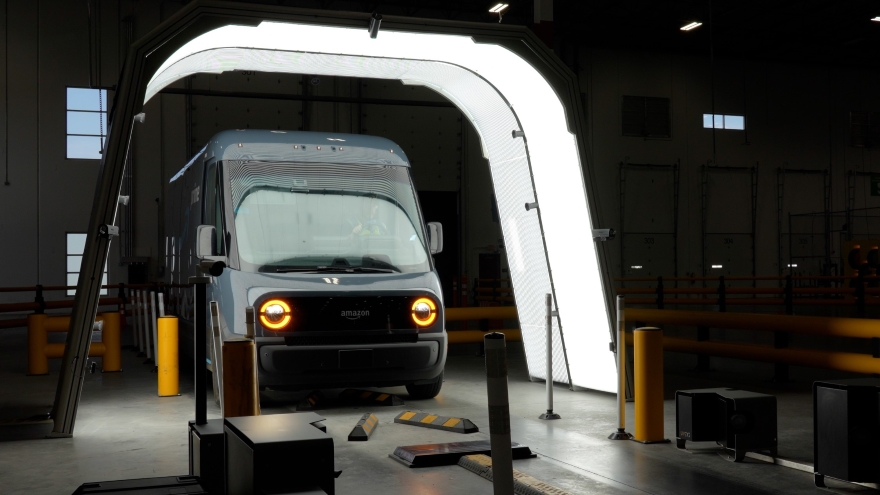UVeye partners with Amazon to automate delivery vehicle inspections with AI

An Amazon delivery vehicle is scanned by a UVeye automated vehicle inspection system. Photo courtesy of UVeye.
Amazon is getting on board with artificial intelligence vehicle inspections.
UVeye announced a partnership with Amazon to deploy its fully automated vehicle inspection (AVI) system in Amazon’s delivery stations in the U.S., Canada, Germany and the U.K.
The AI-powered system automates most of the daily inspection process of delivery vehicles, UVeye said, scanning the vehicles to detect automotive issues, improving fleet maintenance and reducing downtime for delivery service partners.
The system – which scans a vehicle in seconds as it drives through a tunnel of cameras and sensors – has already been piloted at select Amazon delivery stations in the U.S.
“After a successful pilot program, we’re looking forward to the deployment of AVI,” Amazon Logistics global fleet director Tom Chempananical said.
“There are more than 100,000 Amazon-branded delivery vehicles on the road, bringing 20 million packages to our customers every day. With AVI, we can automate most of the inspection process at scale to help reduce time spent on this task by DSPs and delivery associates, and get packages to customers faster, while improving safety on the road.”
UVeye said a study of the data shows AVI finds more defects in hard-to-inspect places, such as damage to the vehicle undercarriage or nails in tire thread (tires account for 35% of all issues) than manual inspections. The data analysis also found the number of vehicle groundings dropped within weeks due to improved maintenance.
By automating part of the vehicle inspection process using computer vision and machine learning, the company said, AVI makes inspections faster, more accurate, systematic and objective.
“Three years ago, we set out to adapt our technology to the particular needs of Amazon,” UVeye co-founder and CEO Amir Hever said. “Each new feature and improvement has brought us closer to where we are today. We are so proud of the system, which is now being scaled to administer tens of millions of inspections a year.”

 View The Latest Edition
View The Latest Edition

